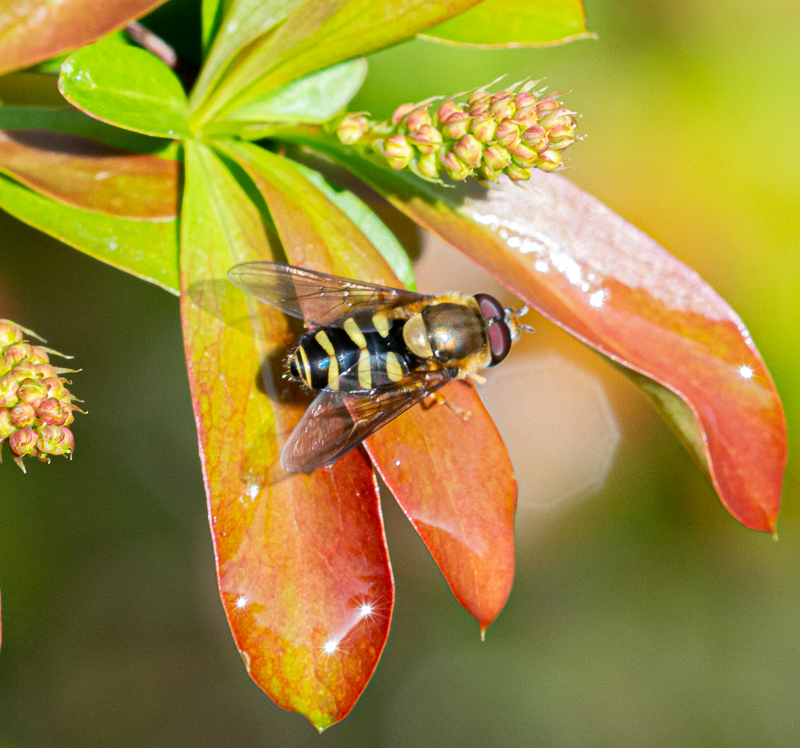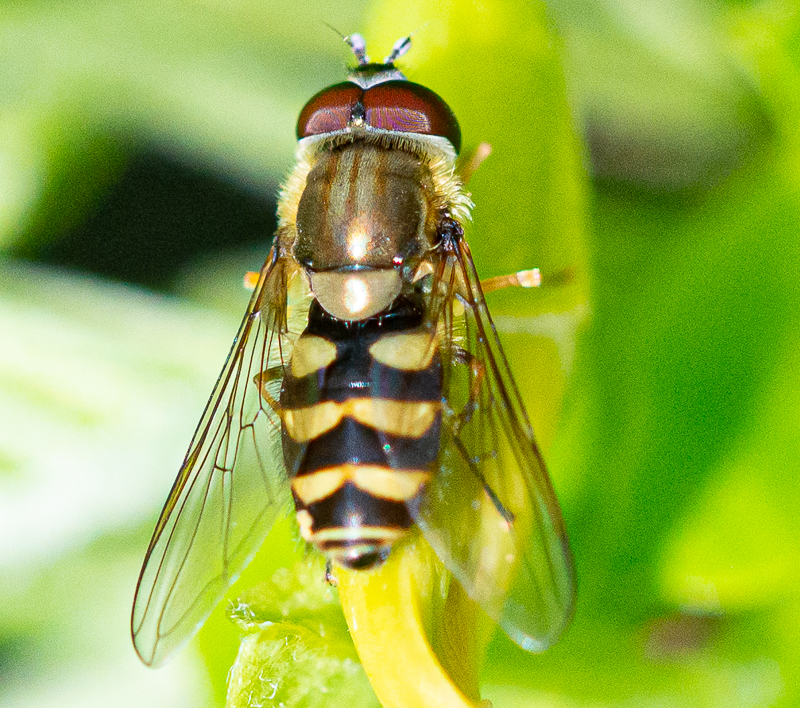
Hoverflies
beneficial as pollinators and predators of aphids

At first glance, hoverflies (also known as syrphid flies) look a bit like bees or even yellowjackets, but they are actually a type of fly that uses mimicry for protection from predators. Adult hoverflies hover like hummingbirds. They can be seen flitting from flower to flower feeding on pollen and nectar and are important pollinators of flowers and field crops. They also like to feed on the honeydew produced by aphids. The adults lack a stinger or chewing mouthparts. They are as harmless as flies.
However, the larvae of the hoverfly are the real killers: they feed voraciously on aphids as well as small caterpillars. In fact, one hoverfly larvae can eat as many as 400 aphids during its development period.
There are hundreds of species of hoverflies: most have distinct yellow and black markings, but some are entirely black or brown. Hoverfly adults are 8 – 15 mm long and have one set of transparent wings. Female hoverflies thoughtfully lay their eggs right in aphid colonies so the larvae can begin eating aphids as soon as they hatch.
The larvae are 10 – 15 mm long and look like slightly flattened legless maggots. They are yellow/green to pale brown in colour with pale stripes. Larvae swing their head from side to side in search of aphids.
There can be 2 – 4 overlapping generations of hoverflies per year. Hoverflies overwinter as pupae on plants, in the soil or under plant debris, so having mulch in the garden can encourage them.
These beneficials do double duty in the ecosystem as both pollinators and predators of aphids.
Sources:
Philip, H. G. (2018). Field crop and forage pests and their natural enemies in Western Canada: Identification and management. Saskatoon, Saskatchewan: Agriculture and Agri-Food Canada.
Gavloski, J. (2017, April). Maximizing the Value of Beneficial Insects on the Farm: Predators and Parasitoids. https://www.gov.mb.ca/agriculture/crops/insects/pubs/predatorsofinsectsfactsheet.pdf

